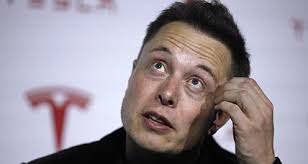
Breaking News
 IT'S OVER: Banks Tap Fed for $17 BILLION as Silver Shorts Implode
IT'S OVER: Banks Tap Fed for $17 BILLION as Silver Shorts Implode
SEMI-NEWS/SEMI-SATIRE: December 28, 2025 Edition
 China Will Close the Semiconductor Gap After EUV Lithography Breakthrough
China Will Close the Semiconductor Gap After EUV Lithography Breakthrough
 The Five Big Lies of Vaccinology
The Five Big Lies of Vaccinology
Top Tech News
 EngineAI T800: Born to Disrupt! #EngineAI #robotics #newtechnology #newproduct
EngineAI T800: Born to Disrupt! #EngineAI #robotics #newtechnology #newproduct
 This Silicon Anode Breakthrough Could Mark A Turning Point For EV Batteries [Update]
This Silicon Anode Breakthrough Could Mark A Turning Point For EV Batteries [Update]
 Travel gadget promises to dry and iron your clothes – totally hands-free
Travel gadget promises to dry and iron your clothes – totally hands-free
 Perfect Aircrete, Kitchen Ingredients.
Perfect Aircrete, Kitchen Ingredients.
 Futuristic pixel-raising display lets you feel what's onscreen
Futuristic pixel-raising display lets you feel what's onscreen
 Cutting-Edge Facility Generates Pure Water and Hydrogen Fuel from Seawater for Mere Pennies
Cutting-Edge Facility Generates Pure Water and Hydrogen Fuel from Seawater for Mere Pennies
 This tiny dev board is packed with features for ambitious makers
This tiny dev board is packed with features for ambitious makers
 Scientists Discover Gel to Regrow Tooth Enamel
Scientists Discover Gel to Regrow Tooth Enamel
 Vitamin C and Dandelion Root Killing Cancer Cells -- as Former CDC Director Calls for COVID-19...
Vitamin C and Dandelion Root Killing Cancer Cells -- as Former CDC Director Calls for COVID-19...
 Galactic Brain: US firm plans space-based data centers, power grid to challenge China
Galactic Brain: US firm plans space-based data centers, power grid to challenge China
Spacex could relaunch a first stage booster in March and is working towards dozens ...

After a test-firing in late January, 2017 one the boosters that have been successfully landed by Spacex is now being transported to Cape Canaveral in preparation for the SES launch, tentatively scheduled for March. Other SpaceX rockets not slated for re-launch have undergone as many as seven test-firings.
Reuse is "just as fundamental in rocketry as it is in other forms of transport – such as cars or planes or bicycles," Mr. Musk said in a briefing after last year's April launch.
Imagine if you could only use an automobile once, driving to your destination, and then buying another to return home. Only the richest of the rich would be able to go on road trips in such a world. Now imagine that car costs from tens to hundreds of millions of dollars.
"There are ongoing challenges in translating a reused rocket to tangible capex savings – worries about it failing, insurance implications, retrofitting turnaround, building up a critical mass of reused first stages in the warehouse," Jefferies International LLC, an investment bank covering telecommunications satellites, wrote in a report studying SpaceX's costs.
In addition to the substantial added costs of insurance, testing, and refurbishing, landing a rocket takes more fuel too. As much as 30 percent more propellant, according to French space agency CNES. That's more weight the engines need to hoist into space, where kilograms don't come cheap.



